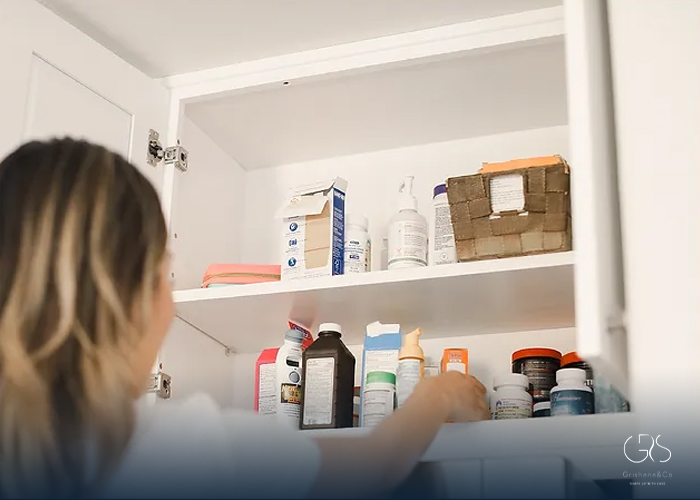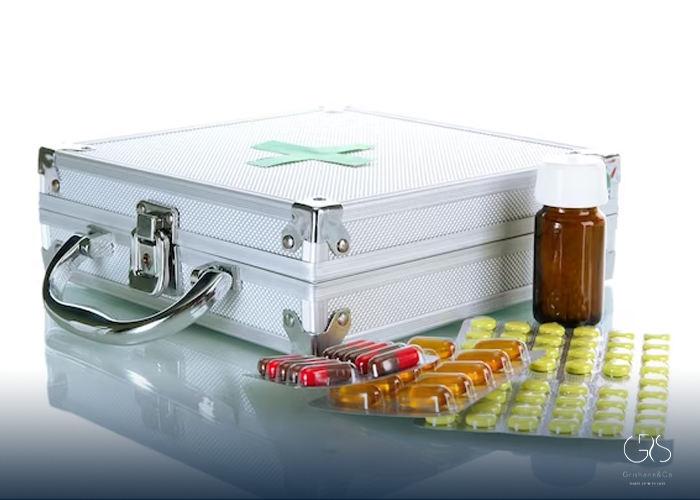When it comes to storing medications, many people resort to the convenience of their bathroom cabinets. After all, the bathroom seems like a suitable location, readily accessible and seemingly safe. However, experts strongly advise against this common practice, warning that bathroom cabinets may not be the safest place to store medications. In this comprehensive article, we delve into the various reasons why bathroom cabinets can pose risks and explore alternative storage options for ensuring the safety and efficacy of your medications.
The Humidity Factor:
One of the primary concerns with storing medications in bathroom cabinets is the issue of humidity. Bathrooms are naturally humid environments, thanks to the continuous presence of moisture from showers, baths, and other activities. This high moisture content can degrade the quality and efficacy of medications, rendering them potentially ineffective or even harmful.
According to a study conducted by the American Pharmacists Association, storing medications in a humid environment can lead to chemical breakdown, loss of potency, and reduced shelf life . It is recommended that medications be stored in a cool, dry place to maintain their integrity and effectiveness.
Heat and Temperature Fluctuations:
The heat and temperature fluctuations experienced in the bathroom can have detrimental effects on medication stability. Bathrooms often experience elevated temperatures due to hot water usage, steam, and lack of ventilation. These conditions can cause medications to deteriorate prematurely or lose their potency.
A study published in the Journal of the American Pharmacists Association found that some medications, such as certain antibiotics and insulin, are particularly sensitive to temperature variations . Prolonged exposure to elevated temperatures can cause these medications to degrade rapidly, posing serious health risks if consumed.
Accessibility and Safety Concerns:
While the bathroom may be a convenient location for accessing medications, it can also present safety hazards, especially for households with children or pets. Bathroom cabinets are generally within reach of little hands or curious pets, making it easier for them to accidentally access and consume medications.
Data from the American Association of Poison Control Centers reveals that approximately 50% of all reported medication exposures in children under six years old occur in the bathroom . This alarming statistic highlights the importance of securely storing medications out of reach of children to prevent accidental ingestion and potential adverse effects.
Drug Interactions and Medication Storage Conditions:
Another aspect to consider is the potential for drug interactions. Storing medications together in a confined space, such as a bathroom cabinet, increases the risks of cross-contamination and chemical reactions between different medications. This can compromise the efficacy and safety of the drugs.
Furthermore, bathroom cabinets expose medications to additional substances, such as beauty products, cleaning agents, and personal care items, which may inadvertently come into contact with the medications. These interactions may alter the chemical composition of the drugs, leading to unpredictable effects when consumed.

Alternative Medication Storage Options:
Given the risks associated with storing medications in bathroom cabinets, it is vital to explore alternative storage options. Consider the following suggestions for safe and optimal medication storage:
- Bedroom Cabinet or Drawer: Choose a cool, dry location away from direct sunlight and sources of heat, such as radiators or windows. Ensure the medication is stored out of reach of children and securely locked if necessary.

2.Medicine Lock Boxes: Invest in a secure lock box specifically designed for storing medications. These boxes come with key or combination locks, providing an additional layer of safety and protection.

3.Fridge or Freezer: Some medications, such as certain liquid formulations or injectables, may require refrigeration to maintain stability. Ensure proper labeling and separate them from food items.
Conclusion:
While using the bathroom cabinet as a medication storage solution might seem practical, it comes with its own set of risks and dangers. The humidity, heat, accessibility concerns, and potential drug interactions make bathroom cabinets less than ideal for storing medications. By considering alternative storage options, we can ensure the safety, efficacy, and longevity of our medications.
By adopting responsible medication storage practices, we can protect ourselves, our loved ones, and prevent accidental ingestions or other undesirable consequences. Make informed choices and prioritize the well-being of your family by securely storing your medications in appropriate locations.
Grow your knowledge and ensure the safety of your medications by exploring the various storage options available.
Sources
- Mayo Clinic, Medication storage: How to keep it safe
- U.S. Food and Drug Administration (FDA), Safe Disposal of Medicines
- WebMD, Medicines: Store Them Safely












